Geometric Form in Lighting Fixtures
Lighting fixtures are inherently geometric, being made in a broad variety of shapes. However, few fixtures are simple squares or ovals. Instead, their shape has usually been altered in some way to bring about visually pleasing distinctions. Form is the term used to describe these alterations, and in this article, we explore and name the different forms which you see in our lighting fixture designs. For the sake of conversation, we breakdown geometric forms into four sections, however it is worth noting that, particularly with abstract shapes, no single form or section below is mutually exclusive.
Regular vs. Irregular Forms
Regular Forms in Lighting
In geometry, regular forms are those which display symmetry, or are otherwise ordinary in shape and form. As it pertains to lighting, nearly all fixtures are symmetrical from left-to-right, however only those which display top-to-bottom symmetry or are "ordinary" in their top-to-bottom geometric ratios are deemed to be Regular forms.
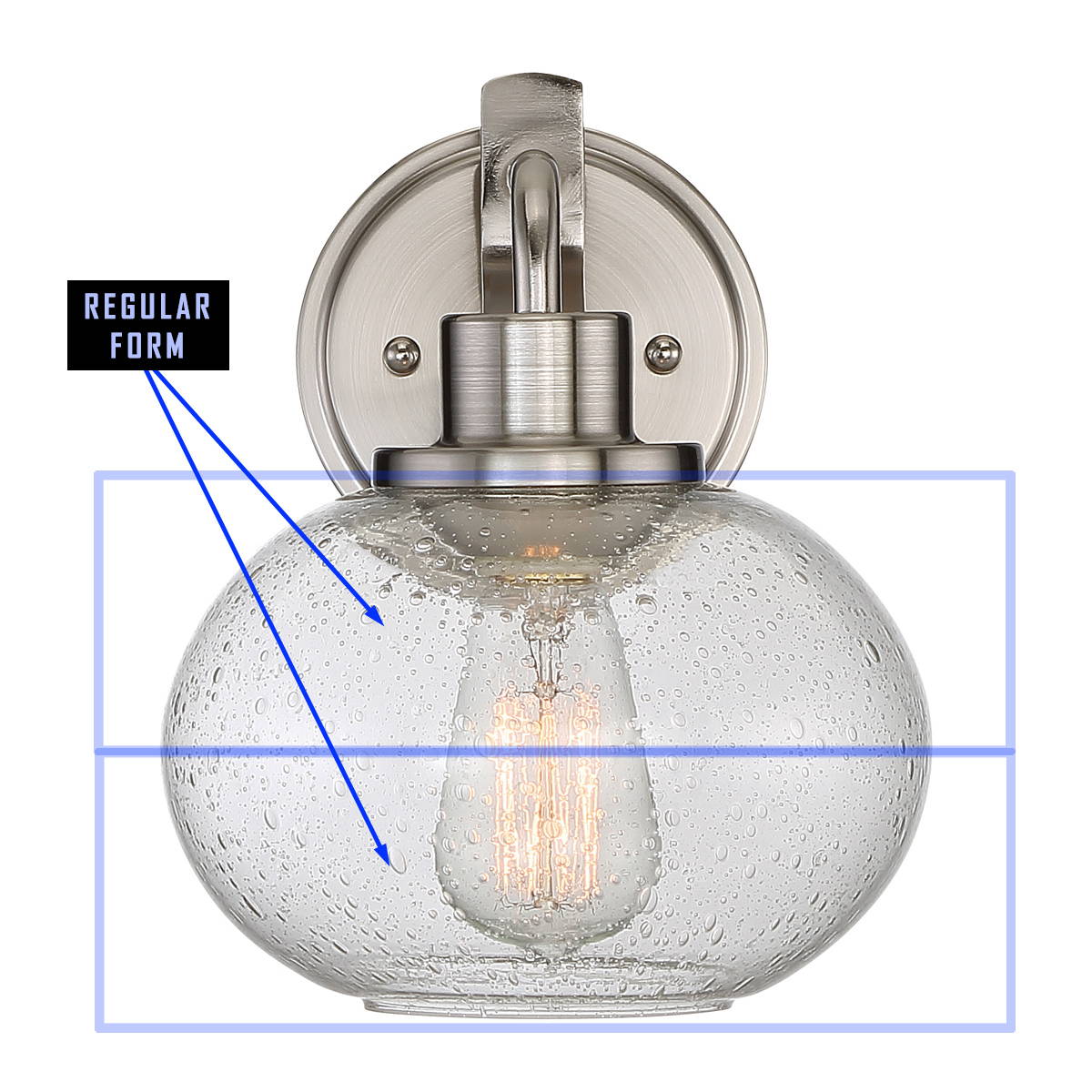
Irregular Forms in Lighting
Irregular forms are those which display intentional asymmetry. Again, nearly all lighting fixtures are symmetrical from left-to-right, therefore the asymmetry of Irregular fixture forms have obvious top-to-bottom differences in their designs. The results are undefined shapes, often abstract in nature.

Additive vs Subtractive Forms
Additive Forms in Lighting
Additive forms are those which exhibit a primary shape, with additional blocks, crescents, flares, finials, etc. added to one of the sides, points, or faces, creating a unique (and visually pleasing) overall form. The example pendant light shows a primary rectangular form, with additional "blocks" added at the top and bottom.
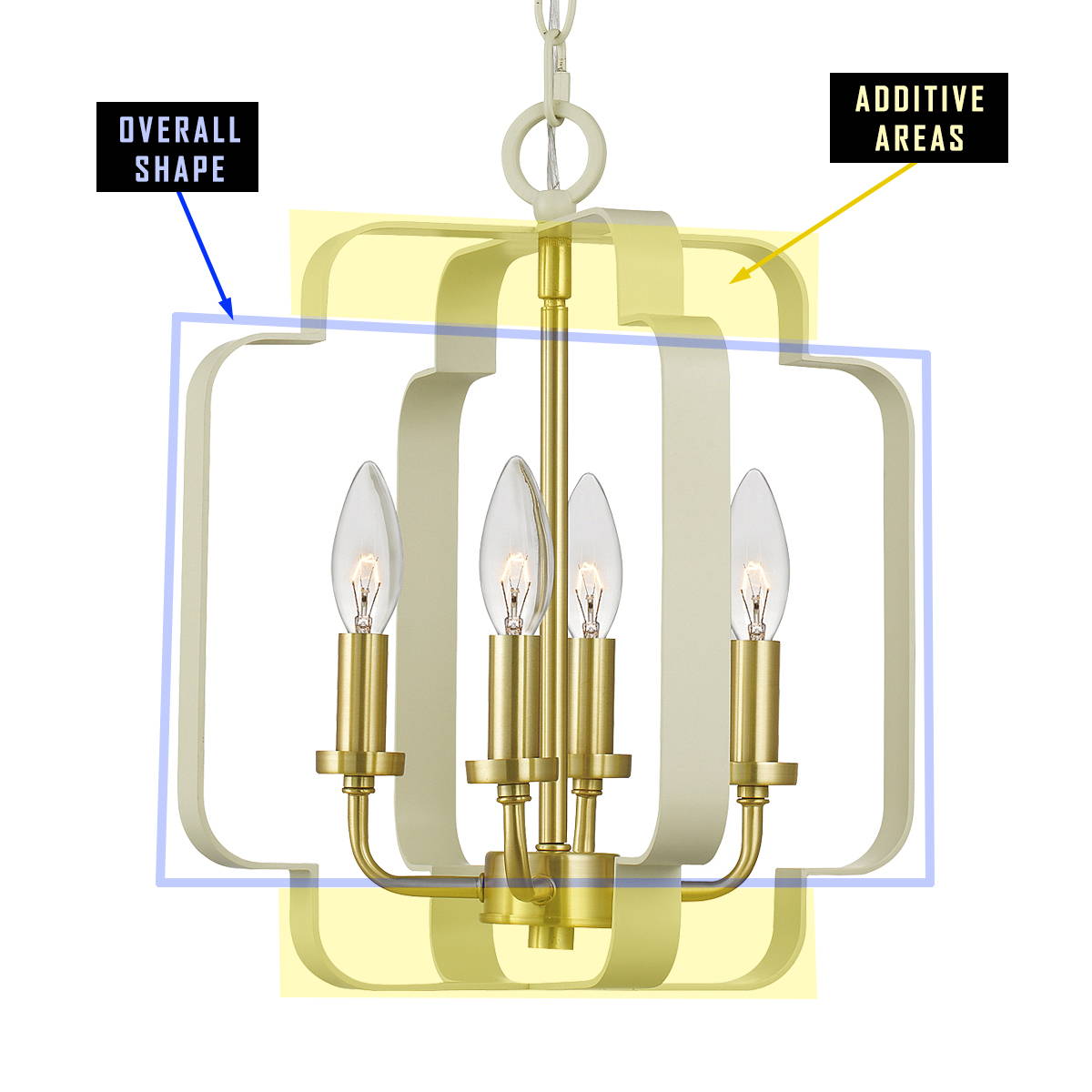
Subtractive Forms in Lighting
Subtractive forms are those which exhibit a primary shape, however some portion has been removed for visual effect. Subtractive forms are typically anchored at the top and bottom (or left and right) to create the primary shape, from which the left and right (or top and bottom) have areas which have been tastefully omitted.
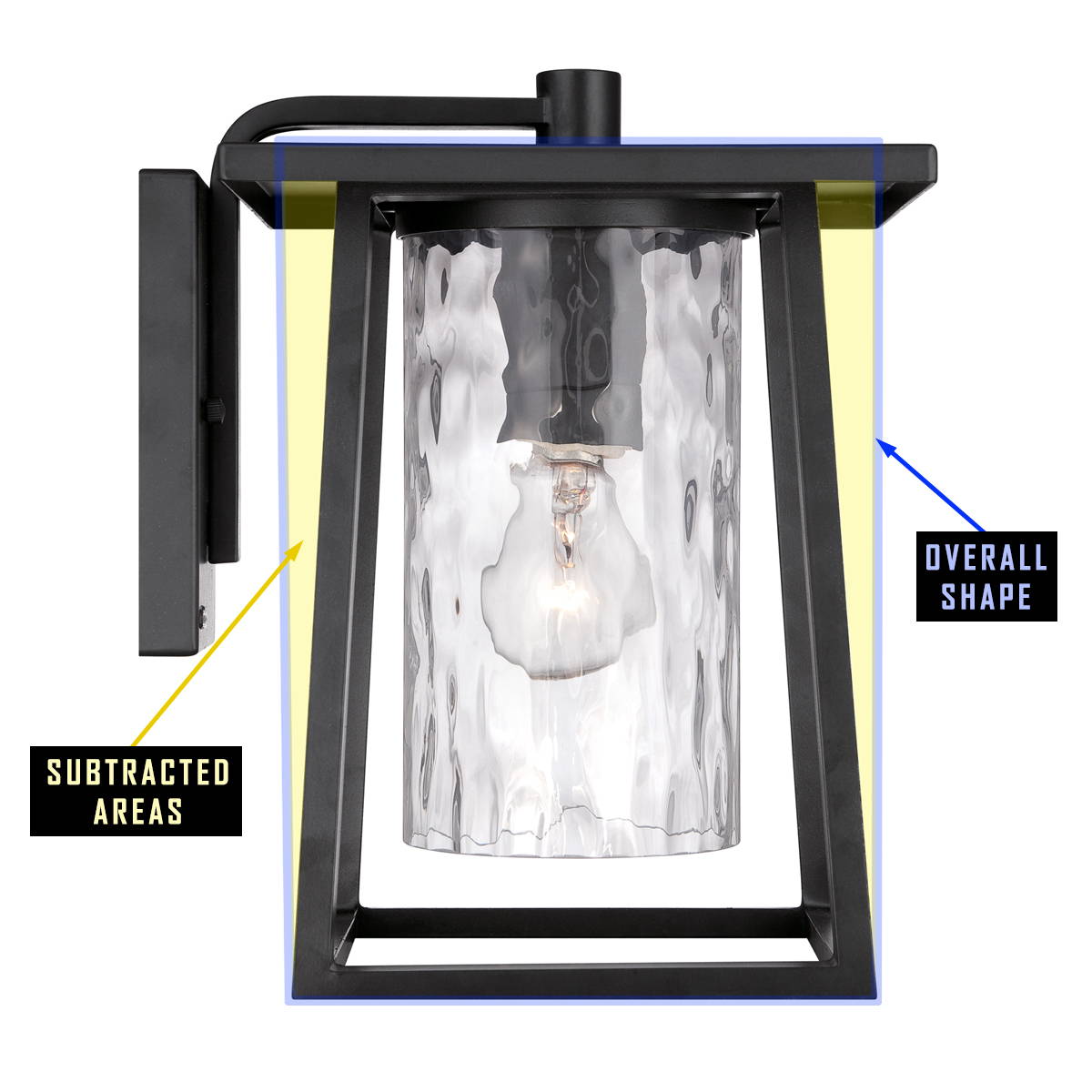
Spatial Forms:
Face-to-Face, Point-to-Point, Interlocking, and Spatial Tension
Face-to-Face Forms in Lighting
As the name implies, Face-to-Face forms are those which exhibit multiple squares or linear eyelines with one side abutting or facing another. Face-to-Face forms primarily appear on fixtures with right angles - whether in overall shape, or through cross-hatch type metalwork. Cylindrical shapes, when viewed from a side-profile, can also present as square and therefore be labeled Face-to-Face.

Point-to-Point Forms in Lighting
As displayed in the example, Point-to-Point forms don't necessarily make for a "pointy" fixture. Rather, Point-to-Point forms are often soft shapes whose interior curves create sharp crescents and angles which meet at a centralized location. This architectural design practice draws the eye into or away from a focal point, and is most common in radial (non-pointy!) designs.
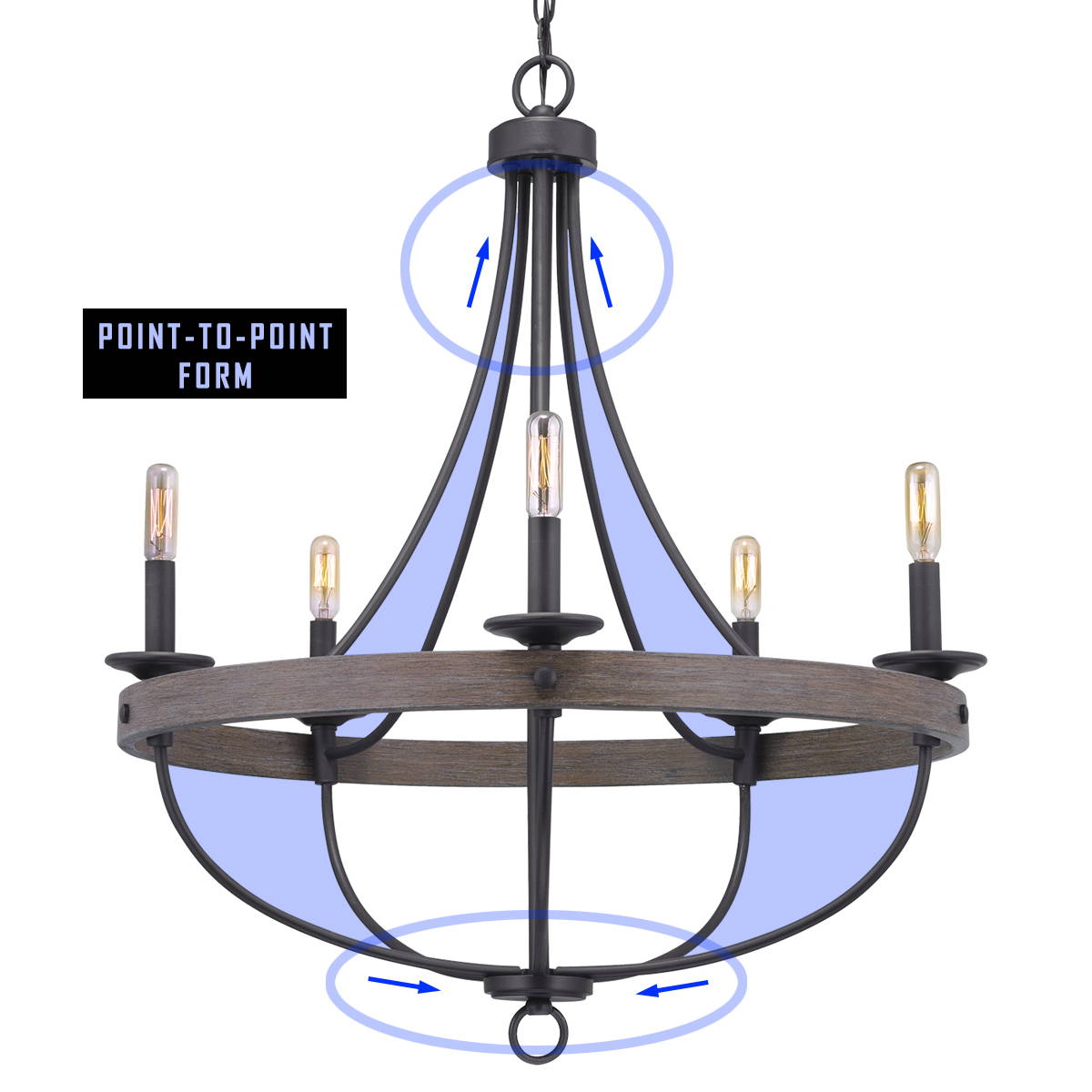
Interlocking Forms in Lighting
When two shapes are nested within one another or are otherwise interwoven, the form is considered to be interlocking. Orbital fixtures, like shown, make use of interlocking principles of form. Another common application is cylinder or round glass shades placed in square metal outer fixture frames.

Spatial Tension in Lighting
As fixtures are designed, the spacing of the bulbs, glass, and frame is critical to achieving various design styles. But because all light fixtures have to connect to a central stem or plate, there is always visual movement, toward or away from the center. Like a magnet pulling and pushing, this visual "movement" is the essence of spatial tension.
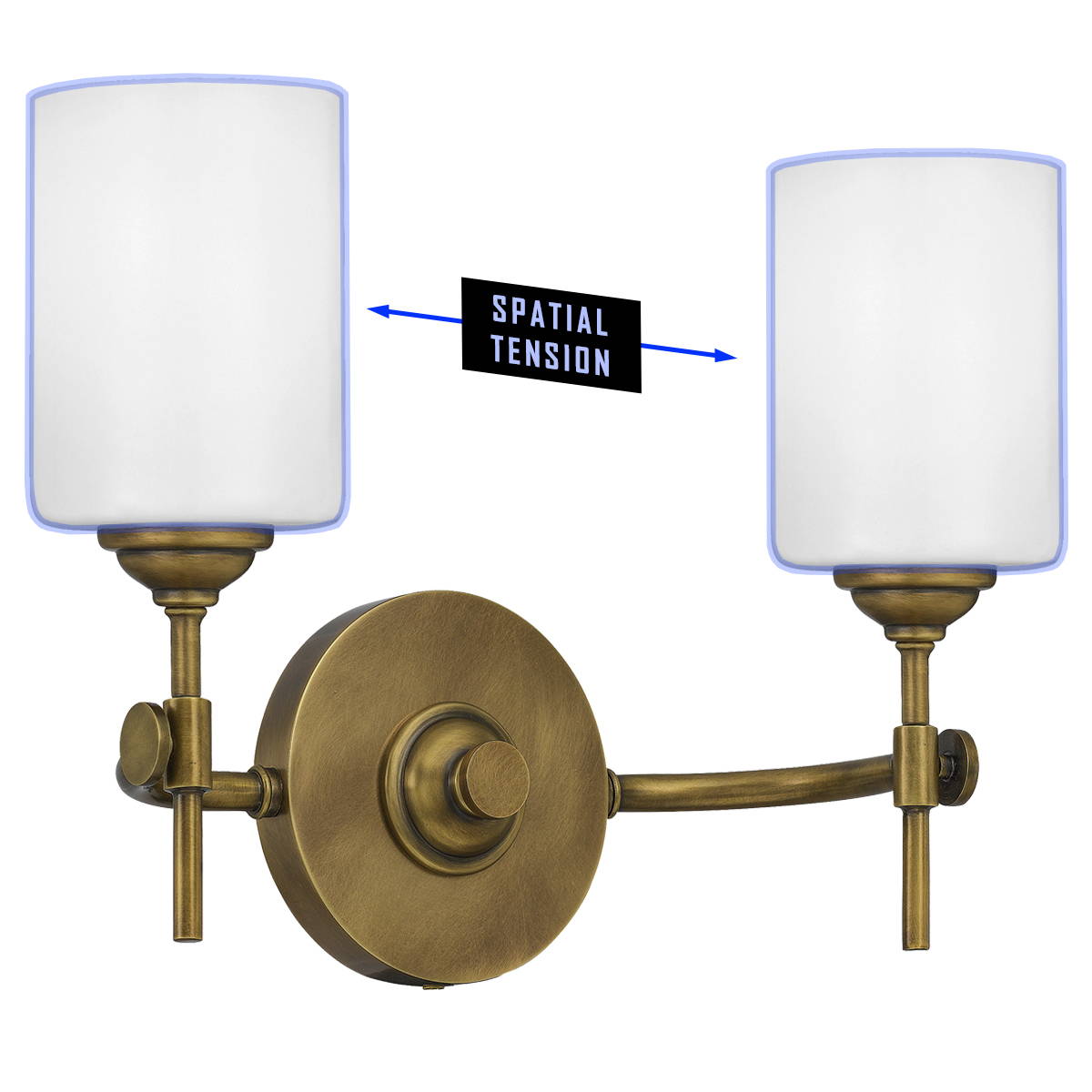
Forms of Focal Points:
Centralized, Radial, Linear, Clustered, Grid, and Collisions
Centralized Forms in Lighting
As the name would imply, centralized forms are those which have a predominant focal point at the center of the object / structure. In lighting, the principles of centralization are most easily seen in outdoor fixtures, such as the example shown. The fixture and glass appear to be cradling the centralized, three-bulb focal point.

Radial Forms in Lighting
Where centralized fixtures aim to draw your eyes into the center bulb arrangement, radial forms do the opposite. From the central stem, your eyes follow lines outward, toward a constellation of bulbs surrounding the stem. These emanating arms are usually equidistant to one another, creating a star-like pattern.
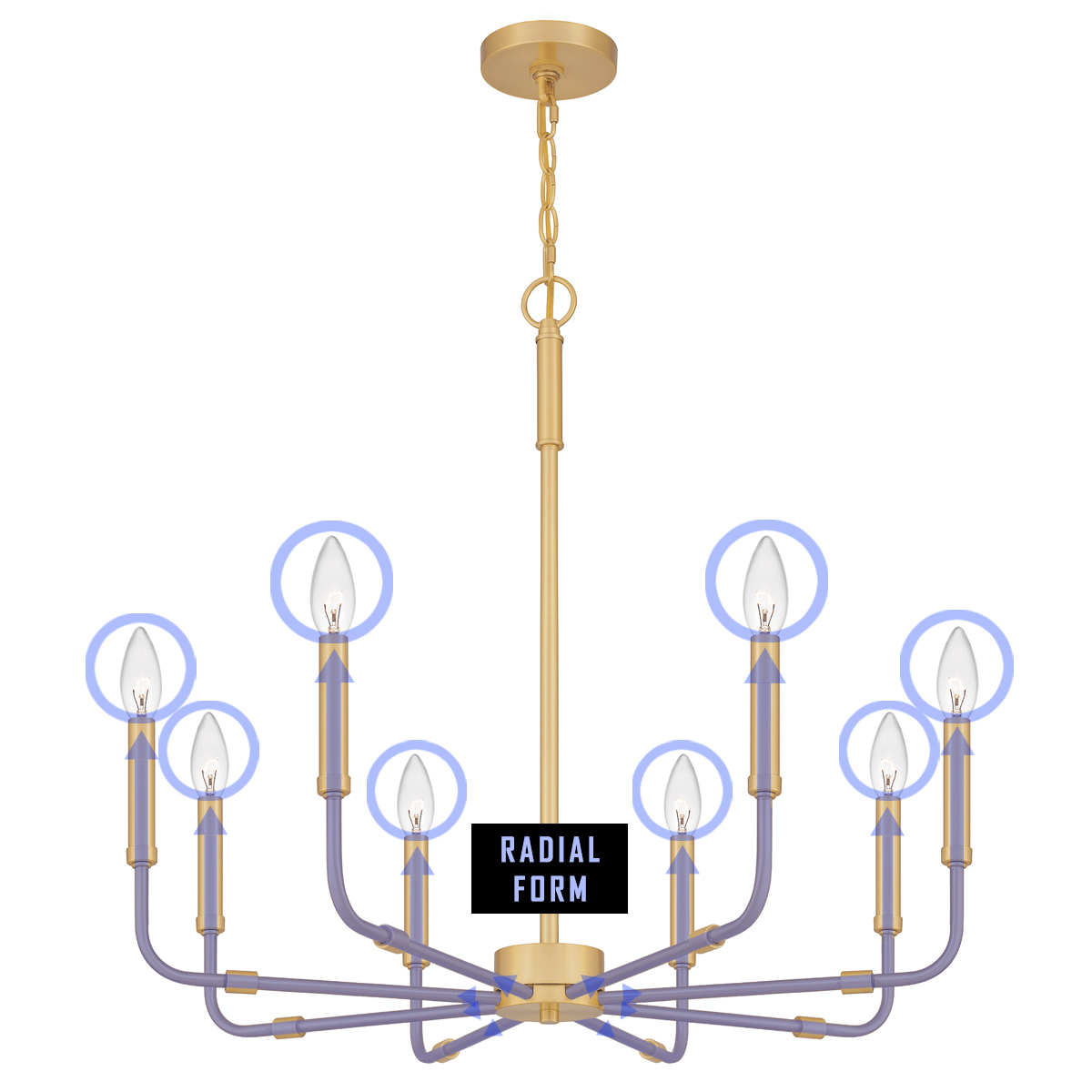
Linear Forms in Lighting
Lines abound in the structures and objects around us, and there are certainly no shortages of lines in the lighting fixtures we sell. But to be considered a Linear Form, we must look at the focal points. In the case of lighting, this would most often be the bulbs, and when they are arranged on a line, a linear form is created.

Clustered Forms in Lighting
Clustered forms are those with asymmetrical groups, or clusters, of focal points. Cluster designs are not common for lighting fixtures as most often an even distribution of light is desired. That said, certain fixtures (particularly those with moving arms) can create clusters, or the appearance of clusters when viewing from certain angles.
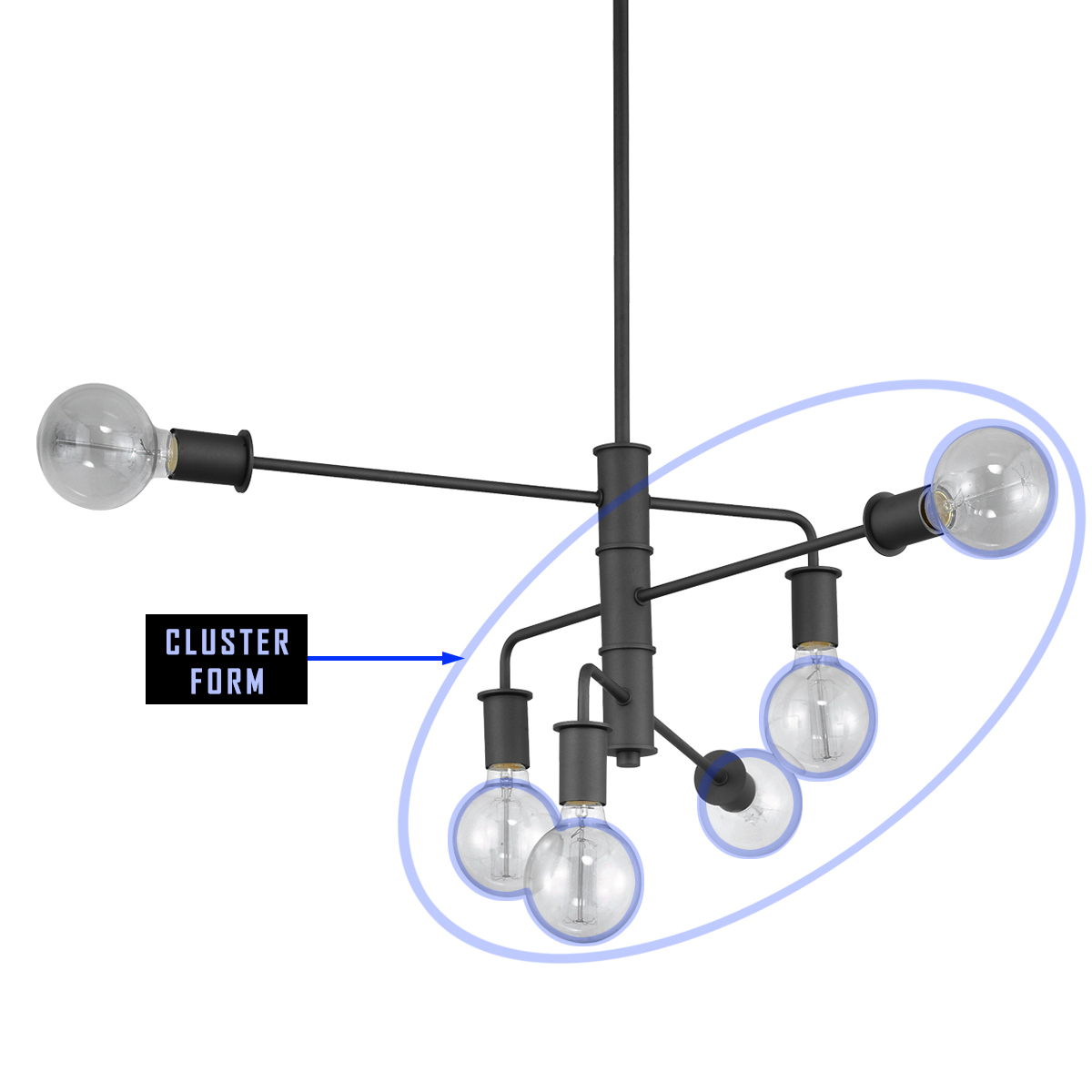
Grid Forms in Lighting
Grids of Form occur when focal points are arranged in a grid-pattern with equal distances between each point. In lighting, this is most often accomplished with cross-hatch metal work, where the overlapping lines create numerous minor focal points. In the example, these areas of overlap have been further highlighted with gold buttons.
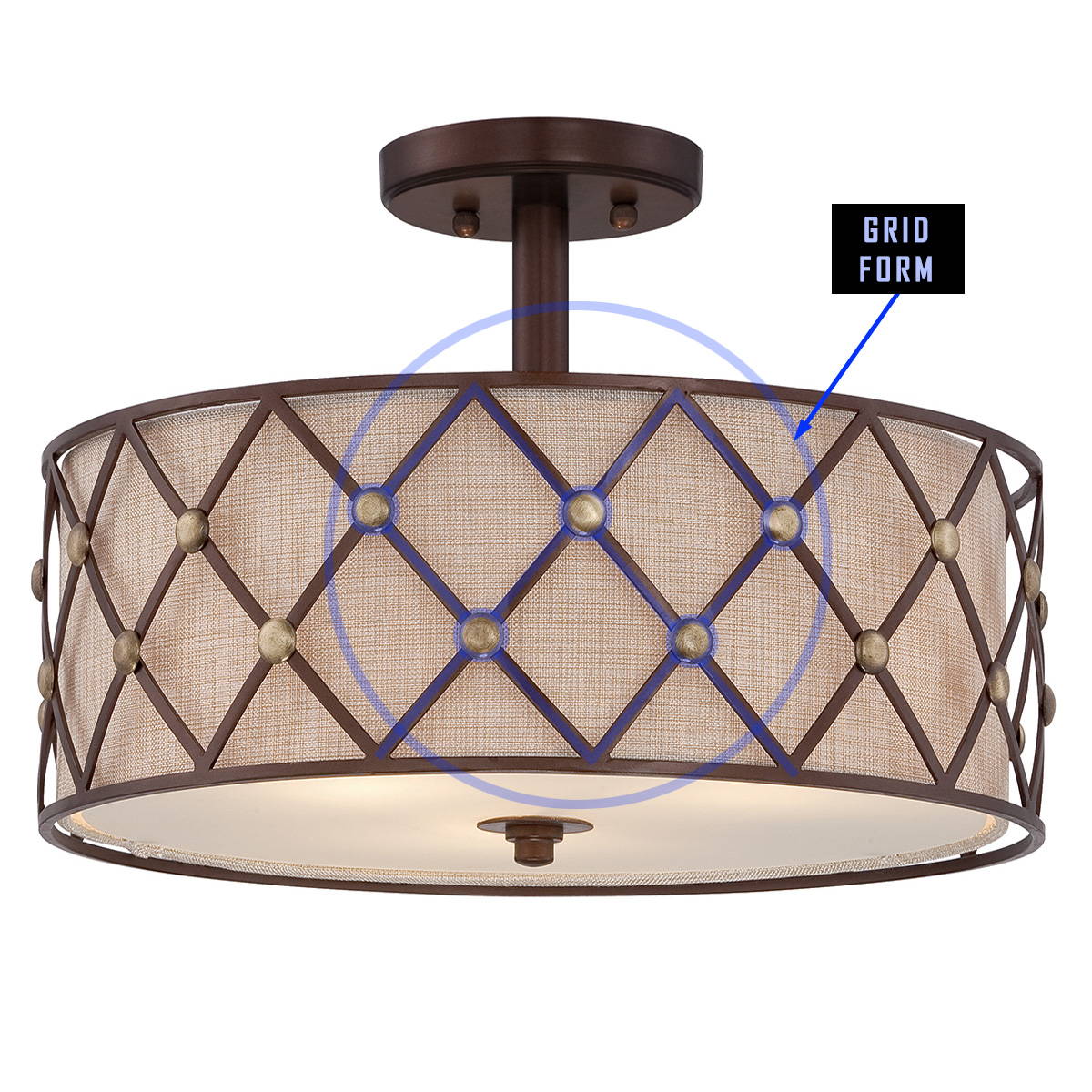
Collisions of Forms in Lighting
Collisions of form occur when two or more distinct (non-abstract) shapes are brought together into a single geometric structure. When collisions are created in lighting fixtures, it is most often done as a circle or cylinder within a square outer frame; its purpose being to highlight the bulb(s) at the center.
